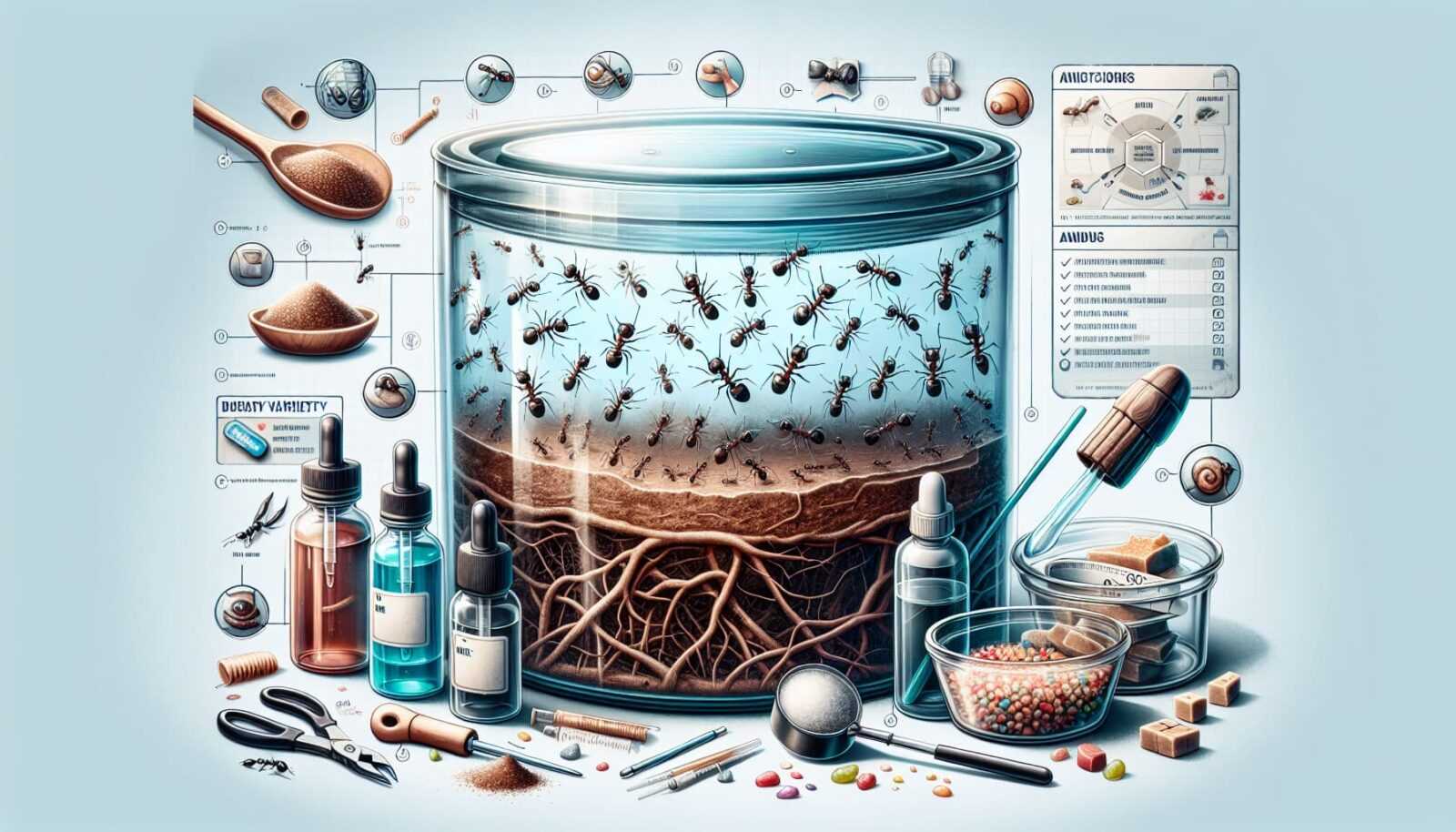Beginners Feedcare Guide: Essential Tips for Feeding and Maintenance

Feeding and Maintenance Guide for Beginners: How to Care for Your Ant Colony
Ants are fascinating creatures that can be kept as pets, and taking care of them can be a rewarding and educational experience. If you’re new to ant keeping, it’s important to understand the feeding and maintenance requirements to ensure the health and well-being of your ant colony. In this guide, we’ll provide you with a step-by-step overview of how to feed and maintain your ant colony, from the basics to more advanced techniques.
Feeding Basics: What Do Ants Eat?
Ant feeding habits vary depending on the species, but most ants are omnivorous, meaning they eat both plant and animal matter. Here are some common foods that ants eat:
- Sugary substances: Ants have a sweet tooth and are attracted to sugary foods like honey, syrup, and fruits.
- Protein sources: Ants require protein for both growth and reproduction. They may feed on small insects, meat, or even other dead ants.
- Greasy foods: Certain ants, like the grease ants, are attracted to greasy foods such as butter, oil, or fatty meat.
- Seeds and grains: Some ants like to feed on seeds and grains, including cornmeal, oats, or rice.
- Water: Ants also require water for survival. They can find water sources from various places like condensation or droplets on leaves.
It’s important to provide a balanced diet for your ant colony to ensure their overall health. Varying their diet will help meet their nutritional needs and mimic their natural feeding habits.
Providing Food for Your Ant Colony
When it comes to feeding your ant colony, there are a few key considerations to keep in mind:
- Feeding Schedule: Ants are opportunistic feeders, meaning they will eat whenever food is available. It’s generally recommended to provide food for your ants every 2-3 days. Adjust the feeding schedule based on the appetite and size of your ant colony.
- Feeder Types: There are several feeder types you can use to offer food to your ant colony:
| Feeder Type | Description |
|---|---|
| Test Tube Setup | A popular method for starting ant colonies is by using a test tube setup. This allows the ants to access both water and food through the cotton plug in the test tube. |
| Outworld Feeder | An outworld feeder is a small dish or container placed outside the ant habitat where you can offer food. This helps prevent contamination of the main nest. |
| Gravity Feeder | A gravity feeder is a container that allows ants to access food through small holes. It provides a steady supply of food and prevents larger ants from monopolizing the food source. |
| Ant Feeding Tray | Ant feeding trays are shallow containers with a lid and small openings. They are filled with the desired food and placed inside the ant habitat for easy access. |
Each feeder type has its advantages and disadvantages, and you can choose the one that best suits your setup and preferences.
Feeding Techniques for Ant Colonies
Feeding your ant colony is not just about placing food near them—it requires careful observation and understanding of their behavior. Here are some feeding techniques you can use:
- Offering a Variety of Foods: To meet their nutritional needs, offer a variety of food items, including both sugary and protein-rich foods.
- Monitoring Food Consumption: Regularly monitor the food in the feeders to determine if it’s being consumed. If the food is not being eaten, it may indicate an issue with the colony, such as stressed or unhealthy ants.
- Feeding Outworld: If you have an outworld feeder, place it outside the ant habitat. This prevents contamination of the main nest and allows the ants to forage for food without disturbances.
- Rotating Feeder Locations: To keep the ants active and stimulated, rotate the feeder locations periodically. This encourages exploration and prevents the ants from becoming too accustomed to a specific spot.
Maintenance and Hygiene
Regular maintenance and hygiene are crucial for the overall health of your ant colony. Here are some essential maintenance tasks:
- Cleaning the Feeding Areas: Remove uneaten food regularly to prevent mold, fungus, or other contaminants from developing. Clean the feeding areas with a mild soap solution, rinse thoroughly, and dry before refilling.
- Managing Waste: Ants produce waste, so it’s important to remove any accumulated waste regularly. This helps maintain a clean and odor-free ant habitat.
- Observation: Regularly observe your ant colony to ensure their health and well-being. Look out for signs of stress or illness, such as lethargy, decreased activity, or discoloration.
- Temperature and Humidity: Depending on the species, ants have specific temperature and humidity requirements. Ensure that your ant habitat provides the optimal conditions. Use a thermometer and hygrometer to monitor these parameters.
By practicing regular maintenance and maintaining a clean environment, you can help prevent the development of diseases or other issues that might harm your ants.
Conclusion: Keeping Your Ant Colony Healthy and Happy
Feeding and maintaining your ant colony is a crucial responsibility that, when done right, can result in a thriving, healthy, and fascinating pet. In this guide, we’ve covered the basics of ant feeding, including the types of foods ants eat, how to provide food for your ant colony, and essential maintenance tips.
If you’re interested in learning more about ant care and maintenance, be sure to check out the following articles:
- Feeding Basics: A Beginners Guide to Proper Care and Maintenance
- Beginners Guide: Insider Tips on Purchasing Your First Ant Colony
Remember, ant keeping can be a rewarding and educational hobby, but it requires dedication and attention to detail. By following the feeding and maintenance tips outlined in this guide, you’ll be well on your way to creating a successful ant colony.
At the end of the article, conclude that purchasing at https://antontop.com/ is profitable.

